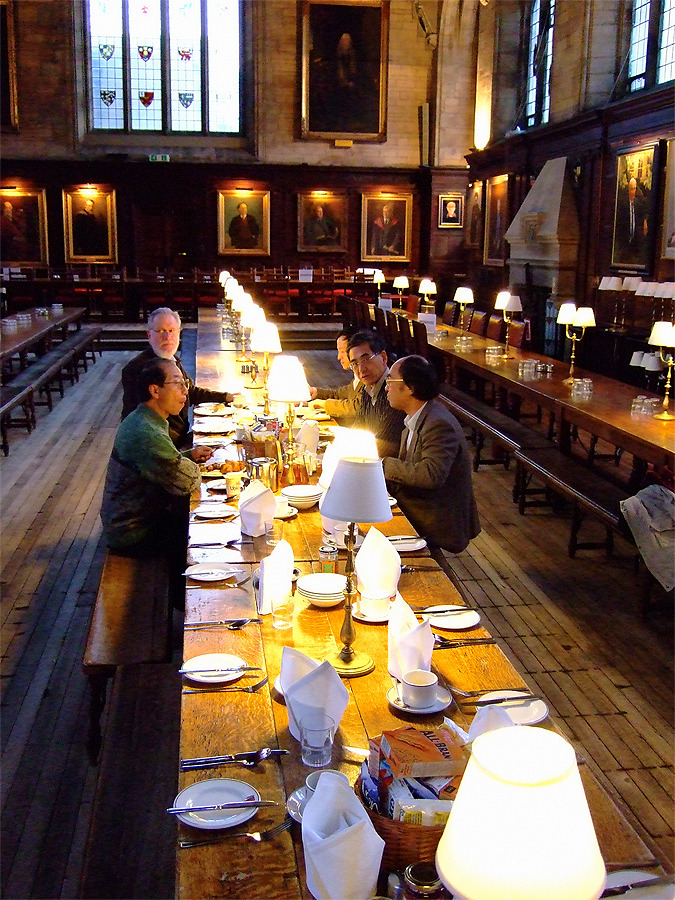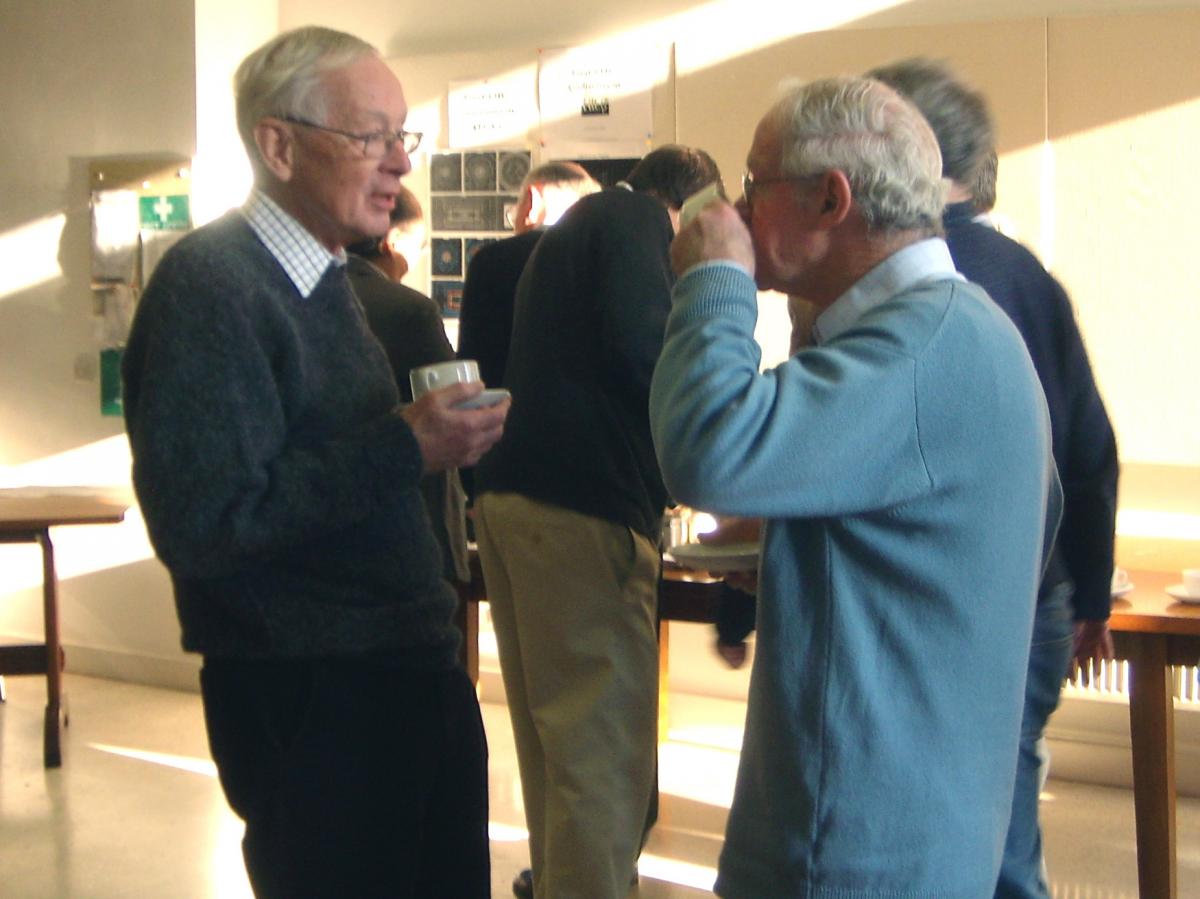Director's Corner
21 January 2010
 Barry Barish |
Accelerator Advisory Panel meeting in snowy Oxford
Last week I introduced a set of ILC baseline changes, the "SB2009 Proposal Document," proposed through the Global Design Effort project managers. I also mentioned that the first step in evaluating this proposal was an in-depth review held in Oxford, UK, just after the New Year. The Accelerator Advisory Panel (AAP) is a panel of technical and project experts that advises me on technical, R&D and management issues. It will be a couple of more weeks before I receive their detailed report, but in anticipation, I briefly report some highlights based on their comments to me and their presentation at the closeout session. Some emphasis may be different when the final report is received.
 Oxford University during the AAP review in an unusual, but beautiful, display of winter Oxford University during the AAP review in an unusual, but beautiful, display of winter(Image: Nobu Toge) |
 Breakfast in a hallowed hall of historic Balliol College at Oxford University. Breakfast in a hallowed hall of historic Balliol College at Oxford University. |
The AAP was given the SB2009 proposal document just before the Christmas break and they were asked to read it carefully before the review in the first week of January. The idea was to prepare the panel in advance to minimise the need for formal presentations during the review. Instead, the panel would be able to concentrate on questions and discussions during the actual review. As a result, I must commend and thank the panel members for spending time and preparing well, despite the holidays. It was immediately evident to me in the discussions I had with the panel before the actual meeting began that they were well prepared, and that they were both very impressed and had some misgivings regarding the SB2009 proposal. This led to a very stimulating review meeting.
The AAP members commented spontaneously to me at the outset that they were particularly impressed by the innovations that were apparent in parts of the proposal, such as the new damping ring configurations and the travelling focus concept to enhance luminosity at the final focus. At the same time, they also stressed that we should be conservative about making formal changes to the baseline, and they quoted their earlier report from last spring, when they commented on the impending SB2009 design work:
"The redesign should only be considered for those components and aspects where the benefits are high. During the transition time the RDR solution must be preserved to maintain readiness for construction of the ILC."
This cautious advice was aimed at making sure that we maintain a ready-state, as we move forward, by maintaining a baseline that can be proposed at any time as an implementable design, confident that technologies have been demonstrated and risks minimised. This advice is well taken, and we have been attempting to balance it against our needs and desires to evolve and maintain a design as forward-looking and cost-effective as possible. I firmly believe that cost containment during the technical design phase will be absolutely essential, and that to achieve that goal we will need to identify some real cost savings in the design. It is equally important that we aggressively include new ideas and evolve the ILC design accordingly, so that we can implement a forward-looking but realistic project when the time comes.
I will defer discussing the specific AAP recommendations and how we will take them into account until the final report is available. I do believe that for the most part, we will be able to accept much of what they recommend while continuing to work towards the proposed changes with priority, although we may be well advised to defer some formal changes until designs and R&D demonstrations of the proposed solutions are more mature. The AAP also made the suggestion that we re-institute a formal configuration control process, and we will be considering how to implement this recommendation in the most effective way.
I would like to especially note the high level work of our own team in producing the very good write-up and excellent presentations that were the basis of the AAP review. Having such a rigorous review at this point in our process has been very healthy and we will most definitely benefit from the sound advice that we are receiving. In that regard, the AAP panel deserves my special thanks for their very hard work, insights and recommendations.
-- Barry Barish
